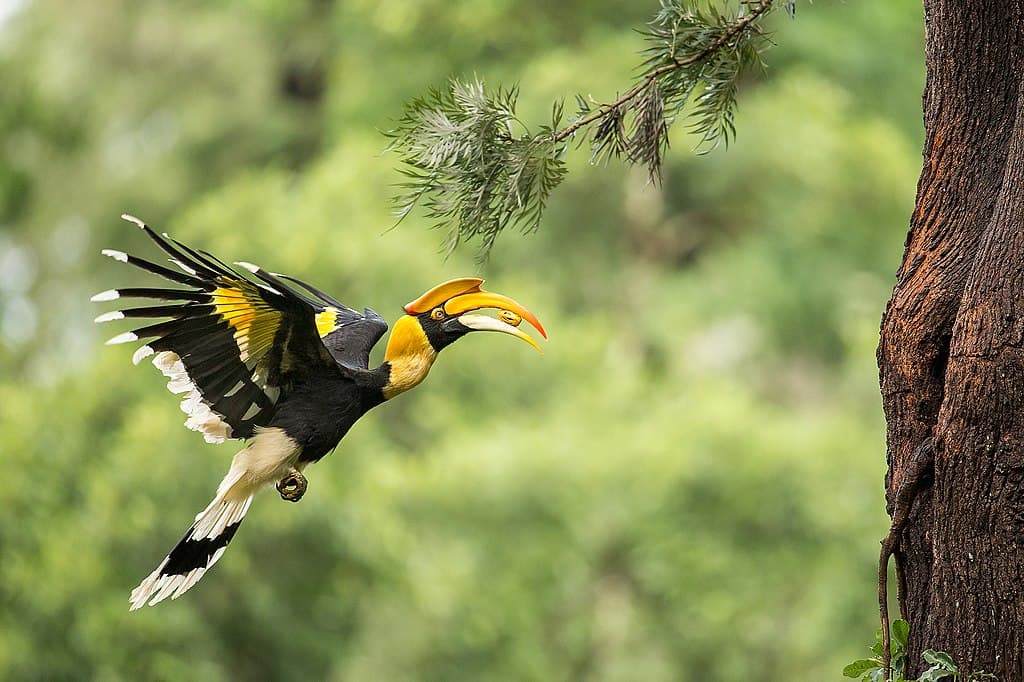Hornbills are one of my favorite birds, I just find them extremely elegant and noble. I even have a favorite outdoor coffee shop that I specifically go to because there are many hornbills roosting around there. The hornbill family consists of 55 living species, and we have 4 hornbill species in Cambodia. Beautiful beaks and colors, let’s take a look and see what those species are.
Brown Hornbill (កេងកងត្នោត)
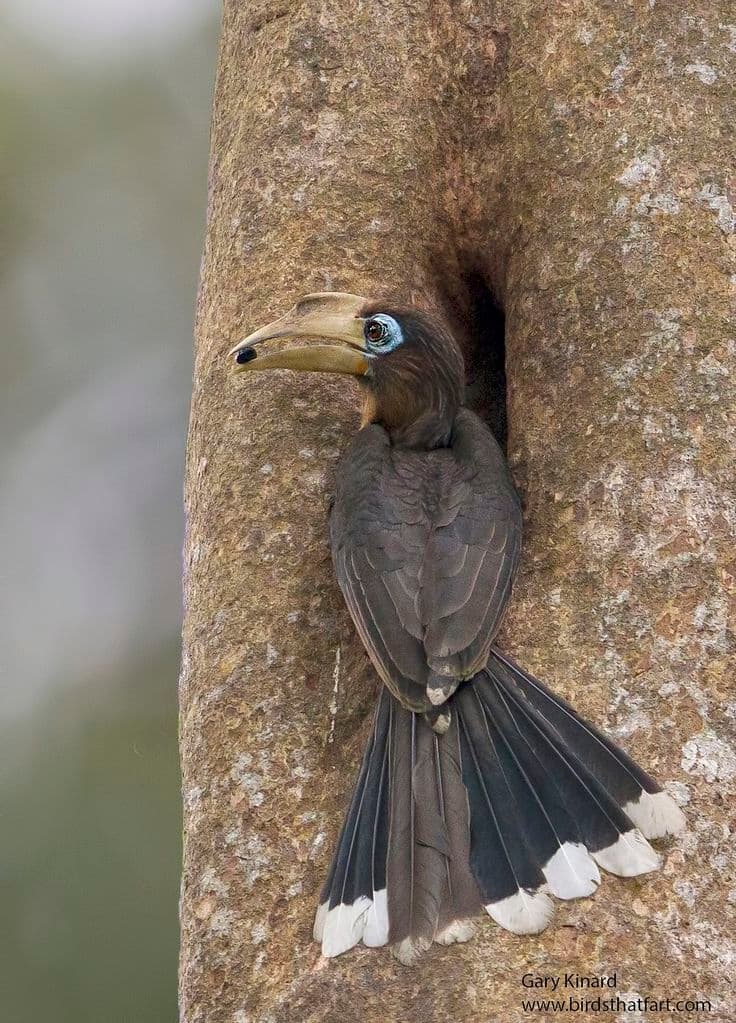
There are two brown hornbill species, and the one in Cambodia is Tickell’s brown hornbill. Brown hornbill also goes by the name rusty-cheeked hornbill, and it grows to around 60 to 65 centimeters big. This medium-sized bird is dark brown on the top and it is red-brown on the below part with a pale bill. Male Tickell’s brown hornbills have brighter rufous cheeks and throat while females have duller colorations. The distinctive feature of this bird is the blue-gray skin around its eyes which is quite beautiful.
This hornbill species inhabits deciduous and evergreen hill forests with a preference for dense primary forests. They live in a small group of 5 to 7 birds, or a large group of up to 10 birds. Brown hornbills live in the same group all year long, and they breed co-cooperatively. In their habitats, they feed on both animals and fruits that they can find. The animals that they prey on are centipedes, crabs, insects, lizards, mice, skinks, and snakes. As for the fruits, they usually consume custard apples, laurel plants, mahogany, nutmeg, and torchwood plants. The range of this hornbill species is facing habitat loss due to agriculture and logging.
Great Hornbill (កេងកងធំ)
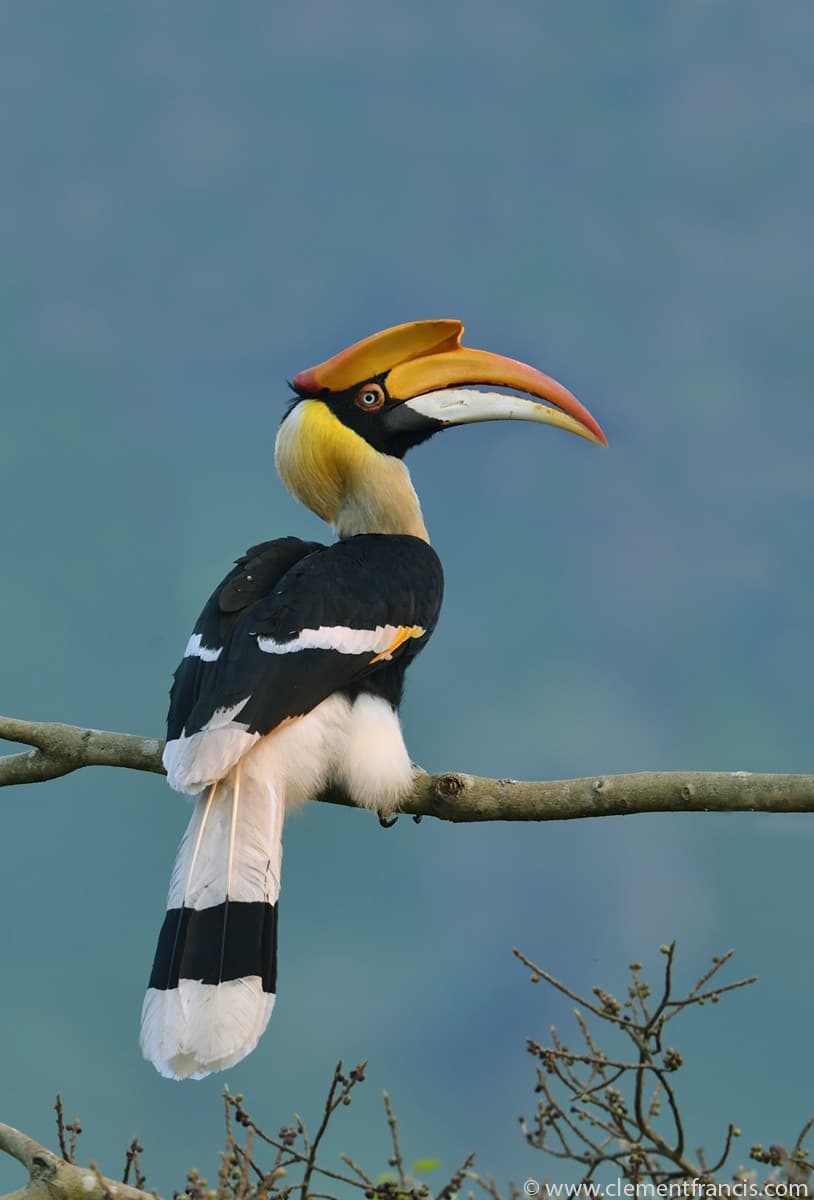
Here we have one of the large great hornbill species in the hornbill family, growing from 95 to 130 centimeters. The average weight of a great hornbill is 2 to 4 kilograms, making them the heaviest hornbills in Asia. A great hornbill is very elegant with its vivid coloration of black, white, and yellow. The body, head, and wings of these birds are mostly black while the abdomen and neck are white. Its tail is also white but with a black band. What’s extraordinary about them is the bright yellow massive bill with a casque on top.
Great hornbills are native to the forests of Bhutan, India, Nepal, Southeast Asia, and Sumatra. Across their range, they prefer dense old growth unlogged forests and rainforests in hilly regions that are now facing deforestation. This hornbill species also lives in small groups of monogamous pairs and their offspring. As frugivores, great hornbills feed on both lipid-rich and sugar-rich fruits, and amphibians, insects, mammals, reptiles, and small birds. Apart from deforestation, illegal hunting for body parts, fat, and meat is one of the main threats to their population.
Oriental Pied Hornbill (កេងកងតូច)
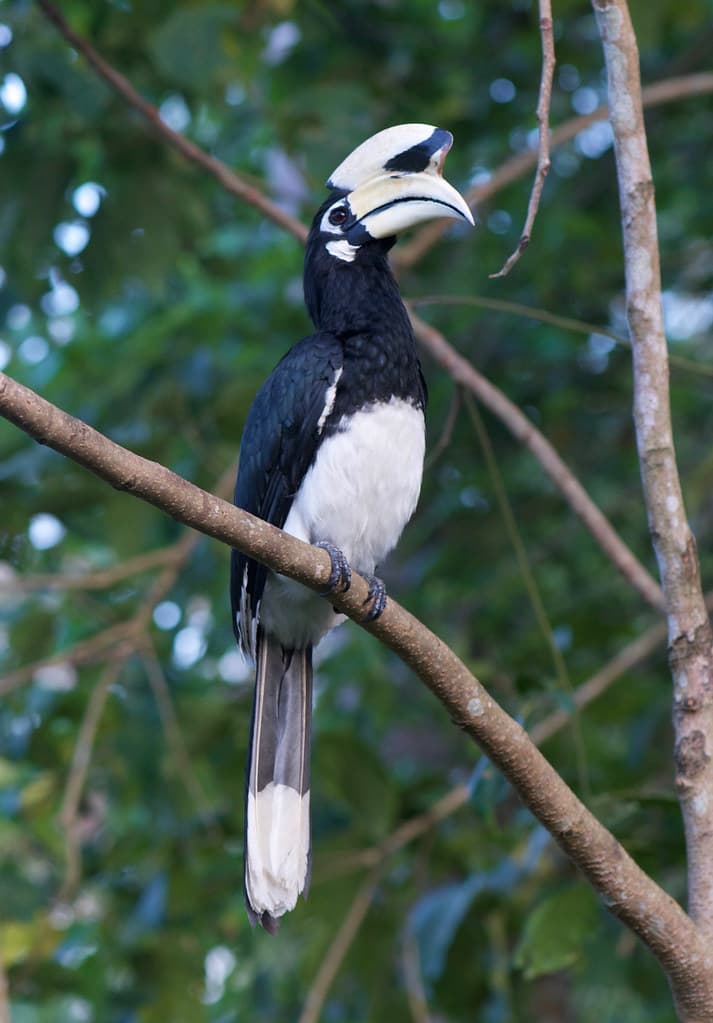
The oriental pied hornbill is a canopy-dwelling bird that also goes by the names Sunda pied hornbill and Malaysia pied hornbill. Its length is 55 to 60 centimeters from head to tail with a wingspan of 23 to 36 centimeters. Not different from other hornbill species, this one also has a large bill that measures up to 19 centimeters long. An oriental pied hornbill has a black head, neck, back, wings, and upper breast with a slight green sheen. The lower breast, lower abdomen, thighs, and underwing of the bird are white. Its tail is black with white tips on all feathers except for the central feathers.
This hornbill is found in the Indian Subcontinent and Southeast Asia with a wide range across many countries. Their natural habitats are subtropical or tropical moist lowland forests. They mainly live in dry and moist deciduous forests, dry and semi-evergreen forests, plantations, secondary forests, subtropical broadleaf forests, and woodlands. The habitats provide them with great food sources such as berries, figs, palm fruit, papaya, rambutans, and other wild fruits. Oriental pied hornbills also feed on amphibians, large insects, small birds, and small reptiles.
Wreathed Hornbill (ព្វាំង)
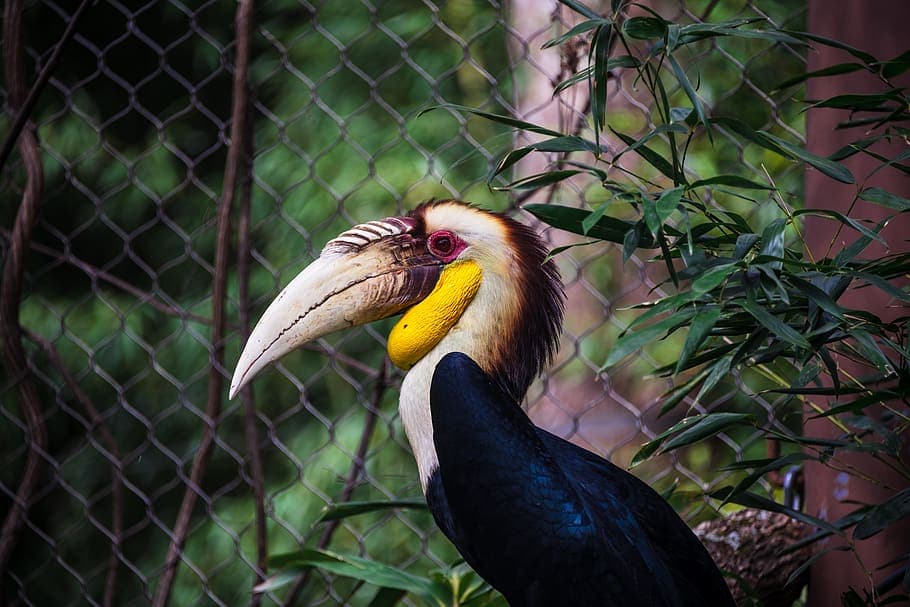
With a very remarkable appearance, wreathe hornbill is definitely one of a kind. It grows from 84 to 117 centimeters, weighing from 1.3 to 3.6 kilograms. This bird got its name from the long curved bill with ridges or wreaths on the casque of the upper mandible in adults. Male wreathed hornbills are black with a white upper breast and face with a rufous crown. Meanwhile, females are black with a blue throat while their size is smaller than males. Wreathed hornbills are also called bar-pouched wreathe hornbills due to the distinctive blue-black band on their lower throat sac.
This hornbill species has a wide range across evergreen forests, foothills, selectively logged forests, and unlogged primary forests. They are most active in the early morning when they forage for large fruits that they swallow whole. Usually during the breeding season, they also feed on small animals like crabs, insects, snails, and reptiles. As social birds, they live in larger flocks than most hornbill species and they remain together all year long. Nowadays, they are facing threats from deforestation, habitat fragmentation, hunting, and pesticides. This is why they have been listed as Vulnerable on the IUCN Red List since 2018.
Related Post: Vulnerable Animals That Thrive In Cambodia
